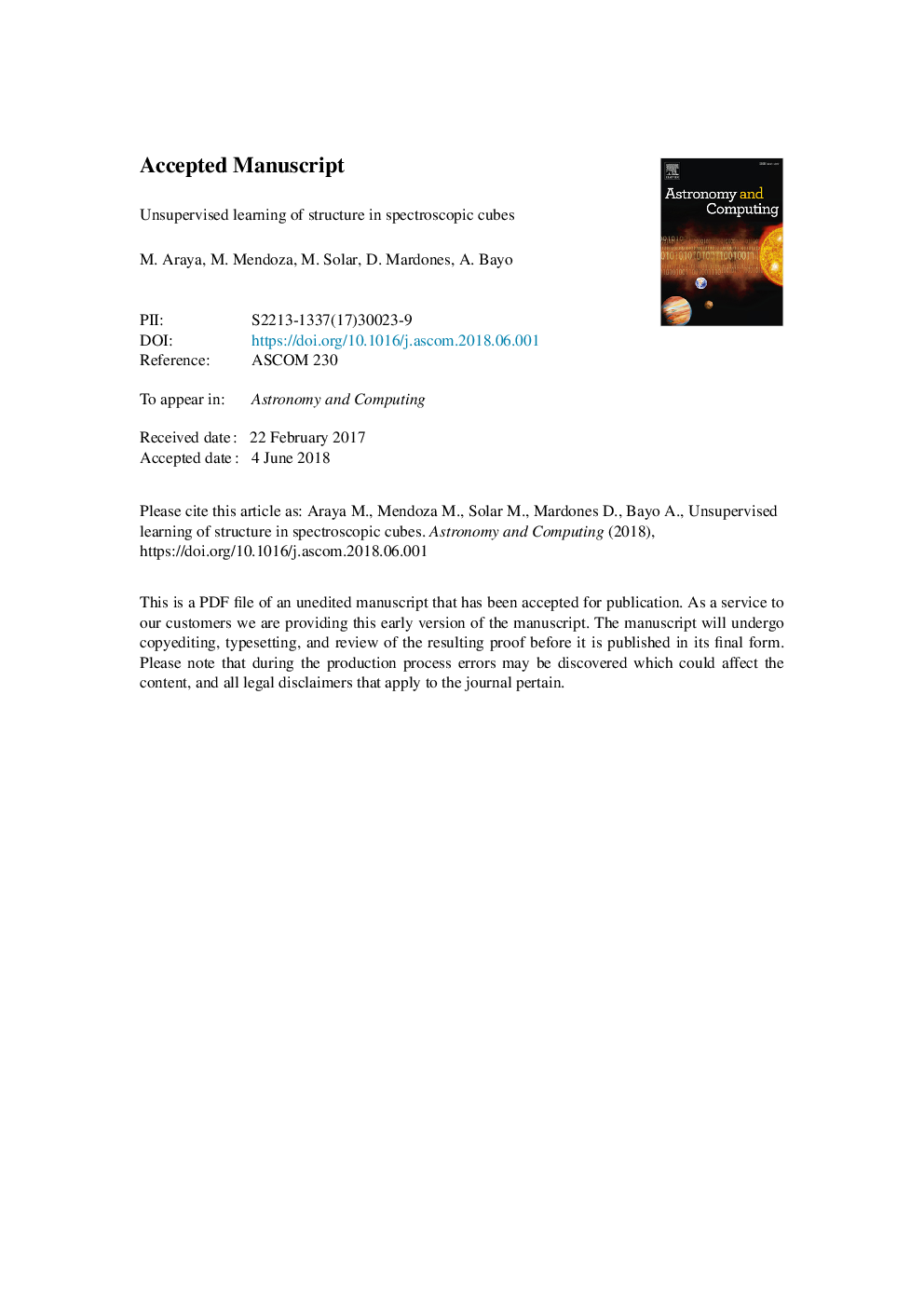| Article ID | Journal | Published Year | Pages | File Type |
|---|---|---|---|---|
| 6905872 | Astronomy and Computing | 2018 | 14 Pages |
Abstract
We consider the problem of analyzing the structure of spectroscopic cubes using unsupervised machine learning techniques. We propose representing the target's signal as a homogeneous set of volumes through an iterative algorithm that separates the structured emission from the background while not overestimating the flux. Besides verifying some basic theoretical properties, the algorithm is designed to be tuned by domain experts, because its parameters have meaningful values in the astronomical context. Nevertheless, we propose a heuristic to automatically estimate the signal-to-noise ratio parameter of the algorithm directly from data. The resulting light-weighted set of samples (â¤1% compared to the original data) offer several advantages. For instance, it is statistically correct and computationally inexpensive to apply well-established techniques of the pattern recognition and machine learning domains; such as clustering and dimensionality reduction algorithms. We use ALMA science verification data to validate our method, and present examples of the operations that can be performed by using the proposed representation. Even though this approach is focused on providing faster and better analysis tools for the end-user astronomer, it also opens the possibility of content-aware data discovery by applying our algorithm to big data.
Related Topics
Physical Sciences and Engineering
Computer Science
Computer Science Applications
Authors
M. Araya, M. Mendoza, M. Solar, D. Mardones, A. Bayo,
